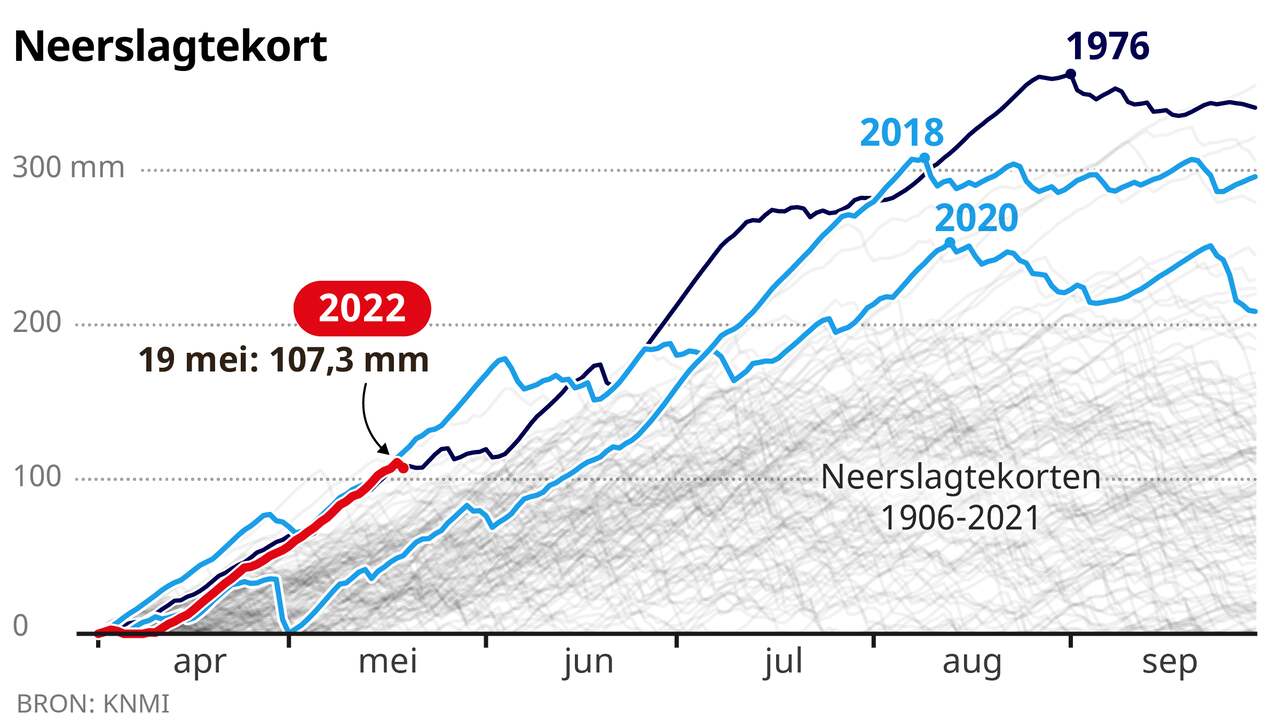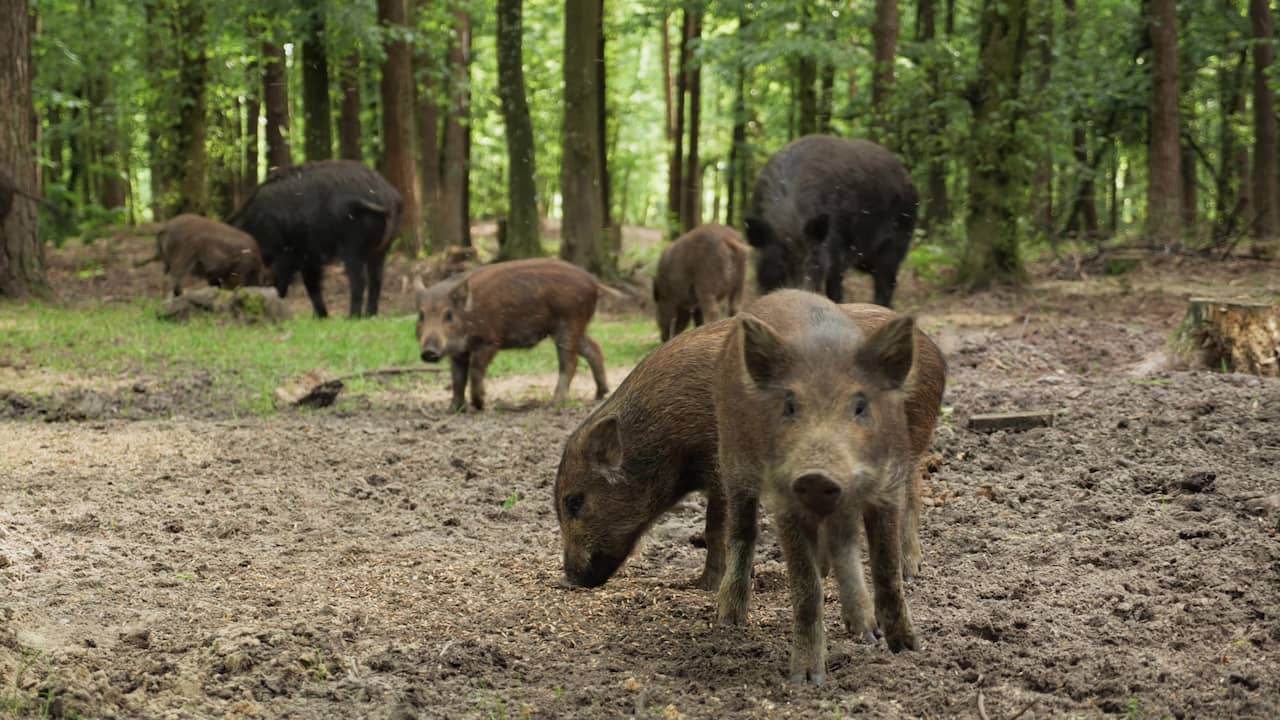Due to the heavy showers that moved over the Netherlands on Thursday and Friday, the drought seems to have been resolved. But appearances are deceptive: downpours are hardly absorbed by the dry soil. What nature needs is drizzle for weeks, says forest ranger Ruben Vermeer.
At first glance, the drought in the forests in the Veluwe is hardly noticeable. Yes, the dirt roads are very dusty, but the trees are full of leaves and the grass is green.
Still, foresters are concerned about the little rainfall in recent weeks. The precipitation deficit, which is recorded annually from April to October, is currently at the level of the record drought year 1976.
“It is only May and everything is already 4-0 behind”, sighs Natuurmonumenten forester Ruben Vermeer. “This is the period when caterpillars have to pupate and when birds have to raise their nests. I am very concerned.”
If birds can’t find enough food, they sometimes leave their nest full of young. Or they eat them, like the stork does, for example. “Nature is tough,” says Vermeer. “Whether that’s a bad thing? As long as they are extremes, nature can handle it. But now we have had three such extremely dry years in four years. At a certain point, nature’s stretch will be gone.”

–
–
–
Worms are too deep for badgers and swine
Vermeer mentions many more examples of how drought affects nature. Flowers may soon lack energy to bloom, so that butterflies cannot find nectar. Earthworms and insects live too deep in the soil, causing badgers and swine to become malnourished.
On the Sallandse Heuvelrug, only two of the fifty nest boxes for owls are occupied, because beech and oak trees do not drop nuts due to a lack of moisture, mice have no food as a result and owls cannot find mice to eat.
Because worms and insects have hidden deep in the ground, wild boars do not find enough food.

Because worms and insects have hidden deep in the ground, wild boars do not find enough food. Photo: Getty Images
–
–
–
Water pools refilled by foresters
To lend nature a hand, this week in the Veluwezoom National Park, dry water pools were filled by Natuurmonumenten. The water comes from collecting basins, which collect rainwater throughout the year. It is transported to the pools in large tanks.
As soon as the first liters of water flow into the pool, the first brown frogs jump around again. They plunge into the puddle with full dedication and birds such as the robin, finch, matkop and nuthatch also start to drink at the edge of the pool.
When dusk falls, wild boars, badgers, red deer and hedgehogs also report to the fresh water.
“The soil is very dry. If such an extreme rain shower falls on it, everything washes away at once.”
Forest ranger Ruben Vermeer
–
–
–
It is not unique that the waterholes in nature reserves are refilled, but that it happens so early in the year. “We see water levels in some places that we normally only see in mid-July,” says Peter Voorn, ecologist in North Brabant. “The drought is about two months ahead. That is really worrying.”
The heavy rain showers that have fallen in recent days also do not remedy the drought. “The soil is very dry. If such an extreme rain shower falls on it, everything washes away at once,” explains Vermeer.
“To nullify the drought, it really needs to rain heavily for weeks,” says hydrologist Wiebe Borren. Vermeer adds: “And then not those gigantic downpours with red spots on Buienradar, but it must drizzle all day long. At peaks you see that the water has drained as quickly as it has fallen.”
–


